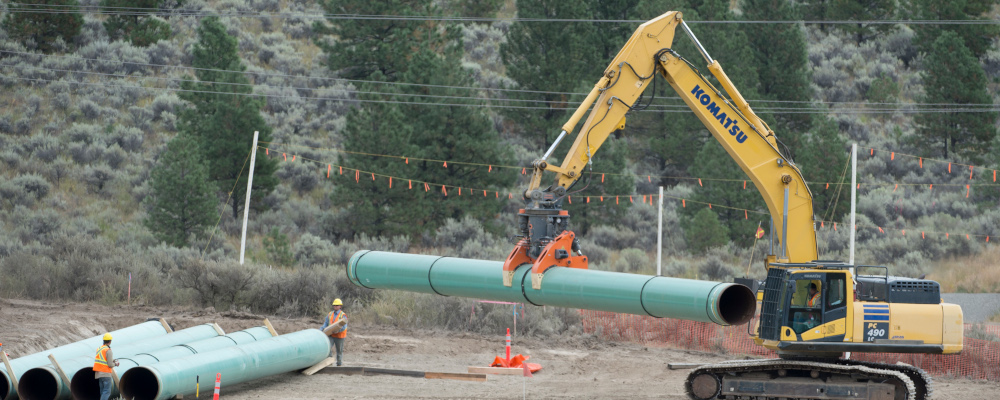An emerging yet persistent theme in diagnosing the economic challenges facing Canada is that we can’t seem to build things anymore. The basic critique extends across the economy from housing to major resource projects and virtually everything in between. There’s a growing consensus that if we want to grow economy, address climate change, and improve the quality of life for Canadians, we need to start building again.
Yet while there’s shared understanding of the problem, there’s not yet a commonly-held solution. That can be explained by various factors including different political preferences, competing policy priorities, and the particularities of different parts of the economy.
One issue though that extends across many of these impediments to building is the environmental assessment process. In Ontario, for instance, environmental assessments (EAs) have been rightly identified as a key barrier to getting major projects completed in general and expeditiously in particular. The Ontario government has recognized some of the challenges with EAs and enacted reforms in recent years. These policy changes eliminated EAs for some projects and truncated them for others—including smaller types of electric transmission, municipal infrastructure like stoplights and intersections, and rebuilds of existing roadways from unnecessary burden. The goal has been to place the focus on those projects which warrant greater attention.
Yet as important as these steps are, they are necessary yet insufficient to fulfill the government’s ambitious plan to build things. Further measures are therefore needed to close this file out and unlock growth while maintaining necessary environmental protections.
The core issue for environmental assessments is that the timeline for their completion is consistently inconsistent. They are subject to myriads of different types of consultation, like consideration for impacts to species-at-risk, local community input, Indigenous tribal consultation, and intergovernmental discussions.
As a prime example, the projects into developing the Ring of Fire have been stalled for over two decades due to a variety of issues and have yet to even advance into the formal EA stage in the latest iteration. It took three years to create an initial project analysis scope for the environmental assessments for each of the access roads that would lead to the Ring of Fire. With the next phase likely to take longer than three years and perhaps even double or triple that timeframe, the process is simply too long. It shouldn’t take more than twenty years to even begin construction.
These delays aren’t limited to new projects either. Waasigan, an electricity transmission line Hydro One wants to build in Northwestern Ontario alongside largely existing transmission lines, has been in the EA process since April 2019, and final approval of an EA is not expected until the end of 2024. Ontario is not alone in facing such troubles with building major projects in Canada, as projects like the Trans-Mountain pipeline and the Atlantic Loop have faced similar issues.
The question, of course, is what policymakers can do to accelerate these projects? The short answer is: we should look for inspiration in our southern neighbour.
In the United States, the National Environmental Protection Act (NEPA) requires environmental assessments for federal projects. These can be those that occur on federal lands, are from a federal agency (like the Department of Transportation), or use federal funds.
The difference between the U.S. and Ontario is that NEPA sets out legislated timelines embedded in a two-step process. The first phase is an environmental assessment that determines whether the project will have significant, or potentially significant, environmental impacts. This process can take up to one year as defined in legislation. During this process, community input is solicited and the impacts of the proposal and alternatives are considered, but there is no disqualification issued for the project in question. If the project does not have significant impacts, full project approval is issued within the year.
When there are significant impacts found, the process moves to a second stage, called an Environmental Impact Statement. This statement is designed to be a decision document that analyses the environmental impacts of a project as well as considers alternatives to mitigate any impacts. There’s also further public engagement during this stage.
The statement features a legislated time limit of two years, directives to “reduce paperwork and the accumulation of extraneous background data”, and even a maximum final report page limit of 300 pages! This report is then provided to decision makers for a final decision, after which it can be appealed in courts and litigated.

Lest anyone accuse the U.S. federal government of being hard-hearted with its approach, states like New York, Washington, and Montana have their own legislation that mimics NEPA methods. Even a progressive state like California has a stricter timeline than the federal government of only one year to prepare a state-level statement.
As the next step of permitting reform, Ontario should adopt the NEPA model in its own EA process. In order to maintain public support and environmental protections, the government may wish to launch public discussions on how to legislate time limits similar to the NEPA process. These discussions should involve diverse stakeholder representation to enable different and even competing views to be heard. This is key for securing ongoing legitimacy to such reforms. By bureaucratizing the process in a manner that seeks to concretely define core environmental objectives, while identifying the Ontario-specific details necessary, a publicly approved process can be created.
Designing a newly defined process will still inevitably result in legal challenges from special interest groups currently benefiting from today’s process. The government must be prepared to defend its actions in court. However, if the policy overhaul discussions are conducted in a transparent manner that involves a strong cross-section of society, it should prove a solid case for the government to win.
Winning is key. It will remove the barriers to development and the current legal grey zone that make environmental assessments so prolonged. Addressing these challenges is ultimately a crucial step to helping Canada and Ontario get back to building.




